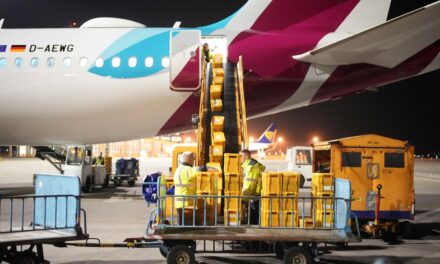
Royal Mail to stamp its mark with German postal system
Christmas cards have never been a big thing in Germany. An enthusiastic card-sending nation, such as the UK, sees its mail bags swell by half to 120m over thefestive period.
The German postal system carries a surprisingly low 72m letters a day year-round. It is also estimated to have far less of a Christmas card boom.
The main reason is probably cultural – friends seem more inclined to meet up over mulled wine at a Christmas market or perhaps send greetings by e-mail. But might the cost and complexity of using Deutsche Post’s services also play a part?
For a start, a standard card needs a 55 cent stamp in Germany. Across Europe, only Denmark’s 58 cent postage is more expensive, according to a study this month by the Free and Fair Post Initiative, an association of postal users and private-sector postal operators.
Then there is the challenge of sticking the right stamp on your missive. Deutsche Post has 64 different postal tariffs.
Some of the rates are quirks of a bygone age. Deutsche Post still charges lower postage for the delivery of books, on the grounds that the dissemination of the printed word, and more widespread literacy, is a moral crusade that should be encouraged.
Oddities aside, however, the main reason behind Deutsche Post’s elaborate pricing system is its insistence on determining the tariff not only on the basis of weight, as many other postal services do, but also according to a letter’s dimensions.
Those who wish to send Christmas cards that diverge from an average dimension are penalised. Anything longer than 23.5cm and your postage leaps from 55 cents to Euros 2.20 (Dollars 2.61). Smaller-than-average cards are also discouraged – anything smaller than 14cm x 9cm costs 95 cents.
While this might be an irritation for users of the German postal system,it certainly pays off for Deutsche Post.
The company imposes its rules for perfectly logical reasons of business efficiency. Its machines can process letters fastest when they fall within a restricted range of average dimensions. Sorting is now 100 per cent automated at Deutsche Post’s 83 high-tech delivery centres, way ahead of the UK’s Royal Mail, which can claim to process only half of its letters by machine.
The company’s proudest innovation is a new device that puts each postal worker’s sack of letters in the right order for delivery on their round, eliminating half the workload for each postie. The result is evident in the profit and loss account. In the first six months of 2005, Deutsche Post racked up operating profits in its letters division of Euros 1.1bn. Royal Mail, which handles 15 per cent more letters every day, could manage only Pounds 168m (Dollars 291m).
But the two companies’ relative profitability may be about to change. Royal Mail wants to invest Pounds 2bn, mainly to increase automation, and in tandem will introduce next August a “pricing in proportion” tariff structure. This is a copy of the German system, whereby postage depends on size as well as weight. Royal Mail profits could benefit, but might the new regime also spell the end of Britain’s Yuletide card-sending frenzy?













